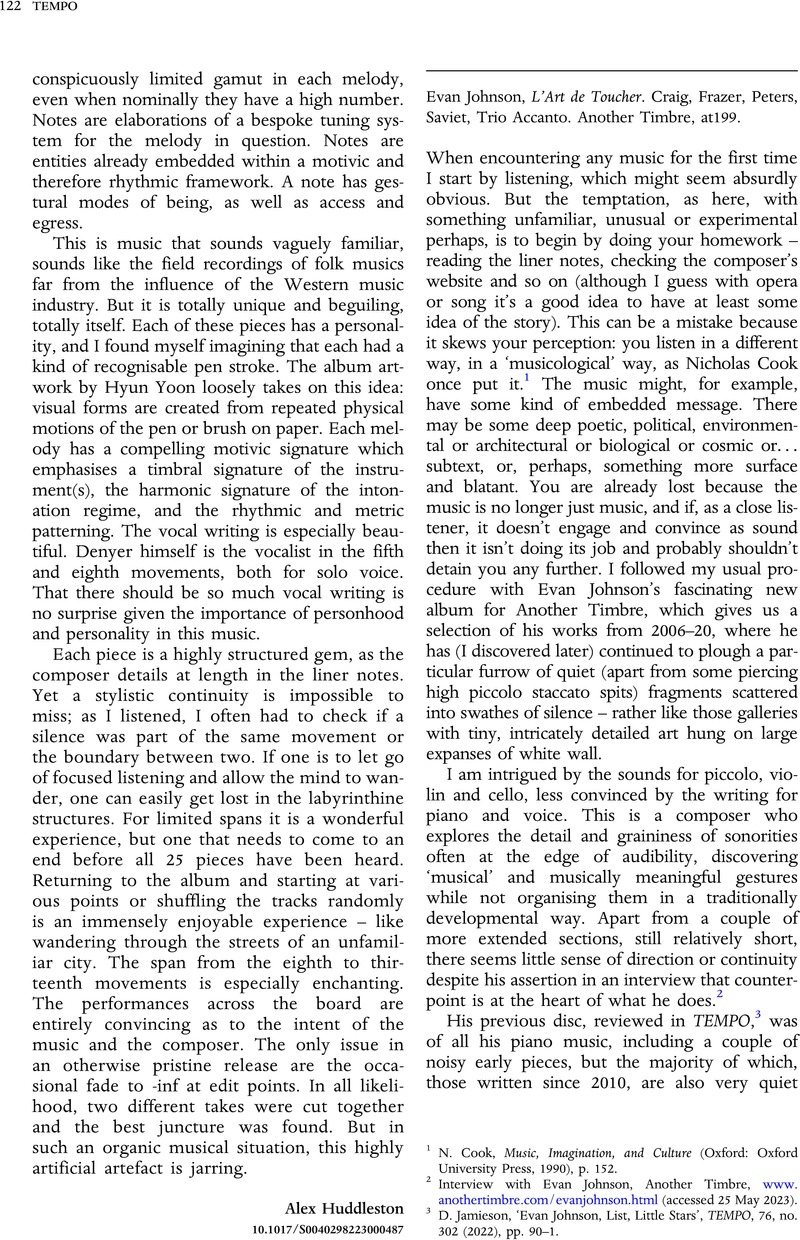No CrossRef data available.
Published online by Cambridge University Press: 01 September 2023

1 Cook, N., Music, Imagination, and Culture (Oxford: Oxford University Press, 1990), p. 152Google Scholar.
2 Interview with Evan Johnson, Another Timbre, www.anothertimbre.com/evanjohnson.html (accessed 25 May 2023).
3 Jamieson, D., ‘Evan Johnson, List, Little Stars’, TEMPO, 76, no. 302 (2022), pp. 90–1CrossRefGoogle Scholar.
4 Netti, Giorgio and Weiss, M., The Techniques of Saxophone Playing (Kassel: Bärenreiter, 2010)Google Scholar.
5 Giorgio Netti, necessità d'interrogare il cielo (1996–99); see my review of Patrick Stadler's 2019 recording in TEMPO, 75, no. 295 (2021), pp. 104–106.